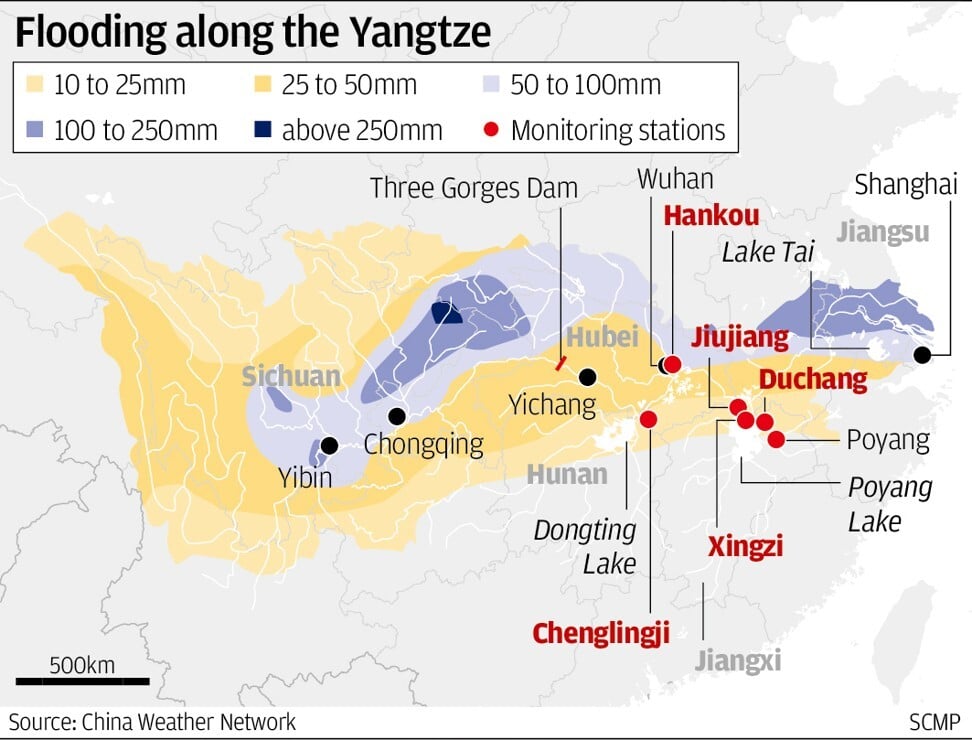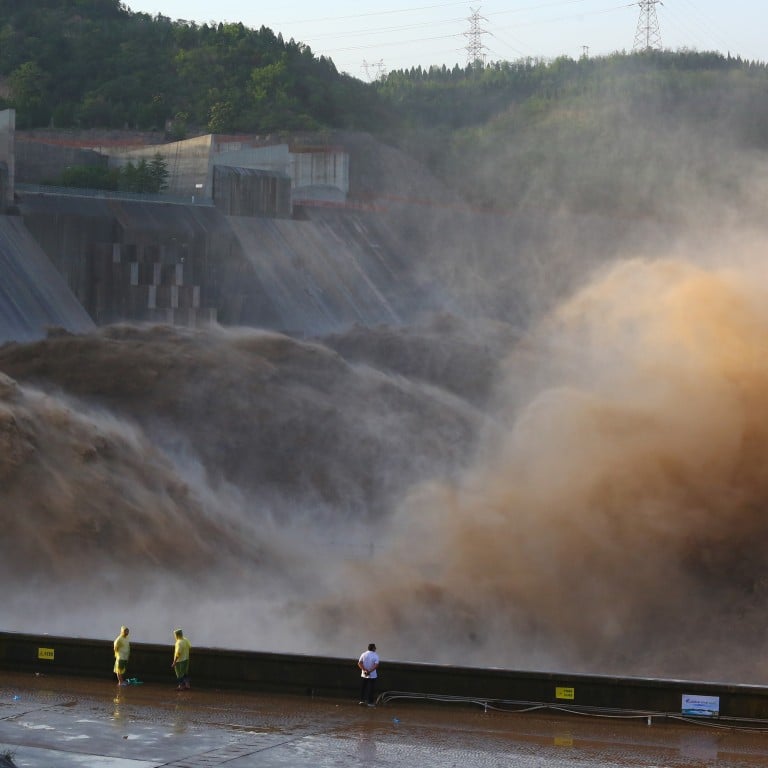
Explainer | Why are the floods so severe in China this year?
- Worst flooding in decades has affected more than 37 million people and left 141 dead or missing
- Climate change and developments that have reduced the size of freshwater lakes have contributed, according to experts
This summer, tens of millions of people across China have been affected by torrential rains that caused floods and landslides and battered cities and villages in dozens of provinces.
It is the worst flooding to hit China in decades. Heavy rains have lashed 27 of the country’s 31 provinces since June, affecting more than 37 million people and leaving 141 dead or missing, the Ministry of Emergency Management said on Monday. Economic losses have been estimated at 86 billion yuan (US$12.3 billion) so far.
By comparison, the Great Flood of 1993 along the Mississippi and Missouri rivers and their tributaries – one of the most costly and devastating floods seen in the United States – resulted in about 50 deaths and 54,000 people being evacuated. Economic losses were put at US$15 billion to US$20 billion.
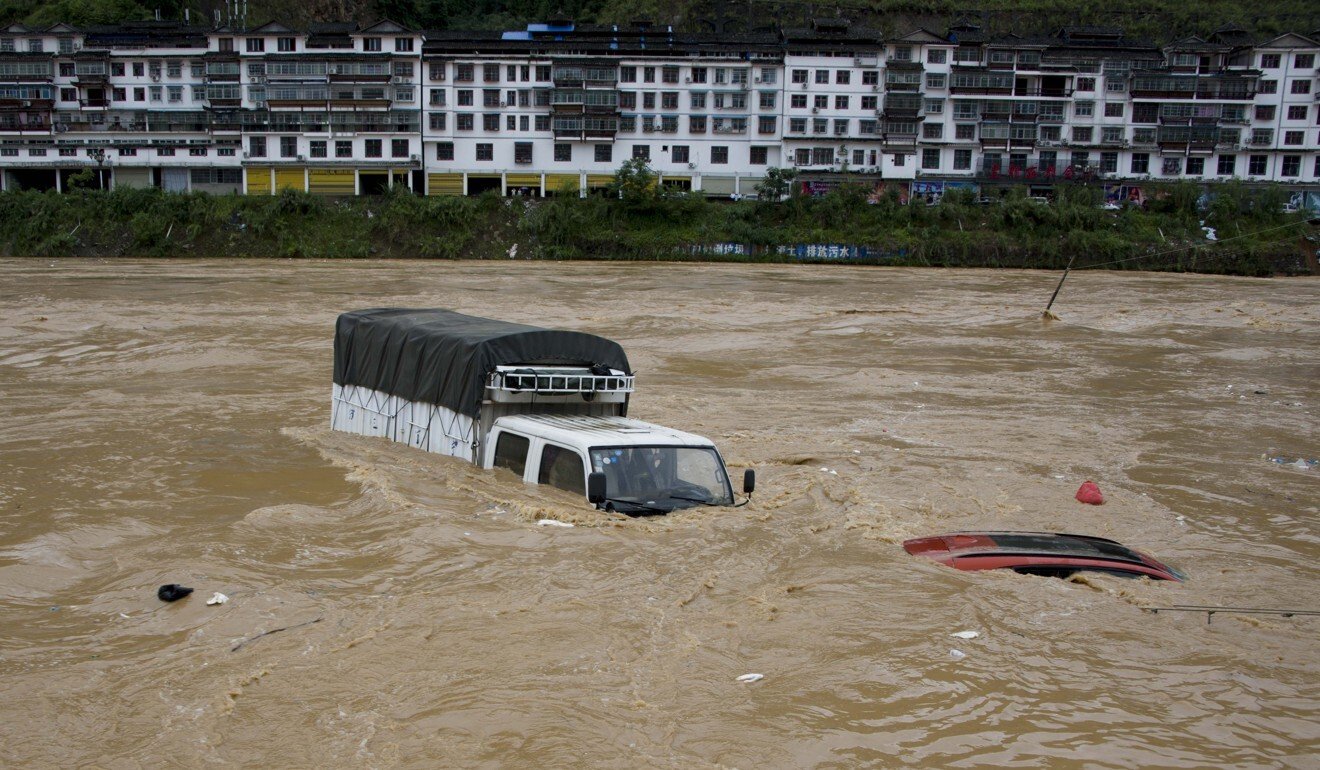
China’s floods started in the south, in the Guangxi Zhuang region and Guizhou province, in June. Heavy rains have since wreaked havoc across large swathes of the country, including Jiangxi province in the east, Anhui in the southeast and Hubei in the centre, with the emergency response for flood control raised to its highest level in some places.
The scale of the disaster is vast, with the water level of 433 rivers going above the flood control line since June, and 33 of them at record high levels, according to the Ministry of Water Resources.
In some of the hardest-hit areas such as Jiangxi, levees have collapsed and houses have been destroyed, reminding stranded locals of the devastating floods in 1998 that killed more than 3,000 people and left 15 million homeless.
“I had only ever seen floods on the news. That night, the floodwater came up to my knees at first, then there was a swell of water again,” she said.
“The Jingdezhen government must think about this problem. We hear that there are floods every year, so shopkeepers with experience usually know when to prepare,” she said, questioning why they were so unprepared this summer.
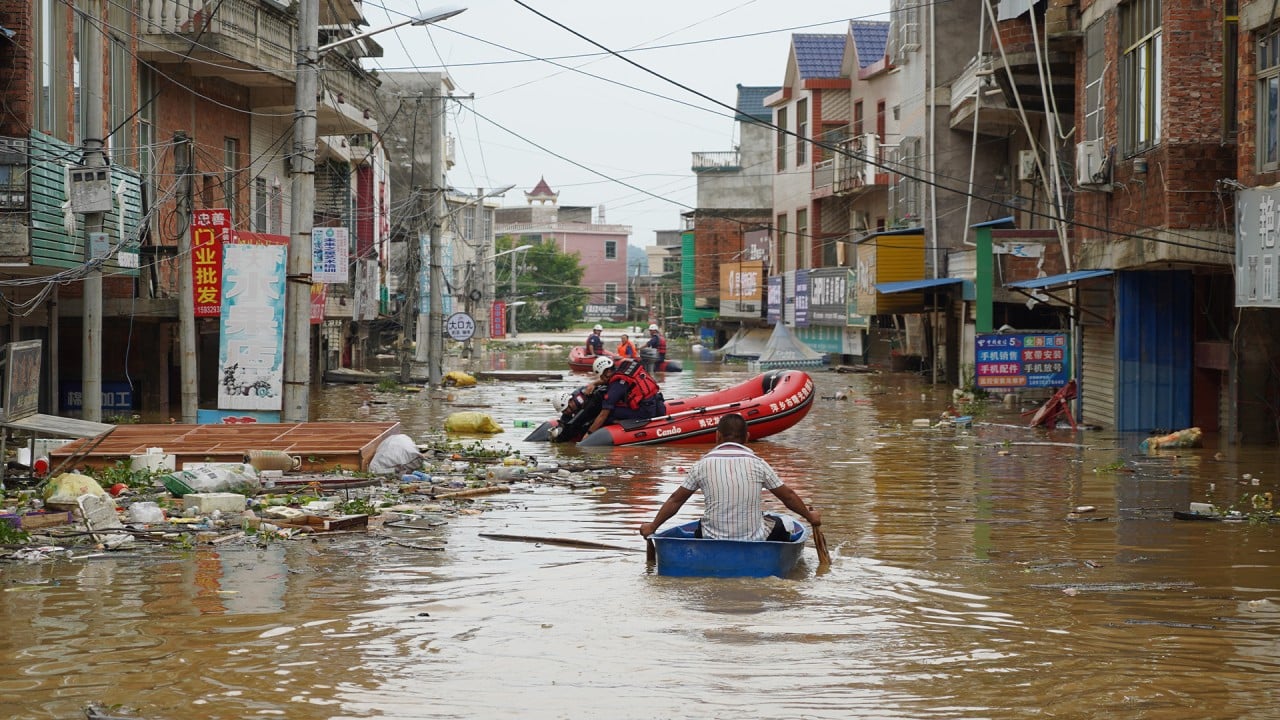
04:30
Saving villagers from China’s flooding Yangtze
Why are this year’s floods so severe ?
“The subtropical high pressure system over the western North Pacific was strong this year,” said Song Lianchun, a meteorologist with the National Climate Centre. “Its intersection with cold air has led to continuous heavy rainfall in the Yangtze River basin.”
Another reason was global warming, he said.
“We cannot say a single extreme weather event is directly caused by climate change, but seeing it over the long term, global warming has led to an increase in the frequency and intensity of extreme weather events,” Song said.
Covid-19 and now floods: Wuhan, first epicentre of the pandemic, braces again
From 1961 to 2018, there has been an increase in “extremely heavy rainfall” events in China, according to the China Climate Change Blue Book (2019). And since the mid-1990s, the frequency of extreme rainfall has increased dramatically.
Over the past 60 years, the number of days of heavy rain has gone up by 3.9 per cent a decade, according to Song.
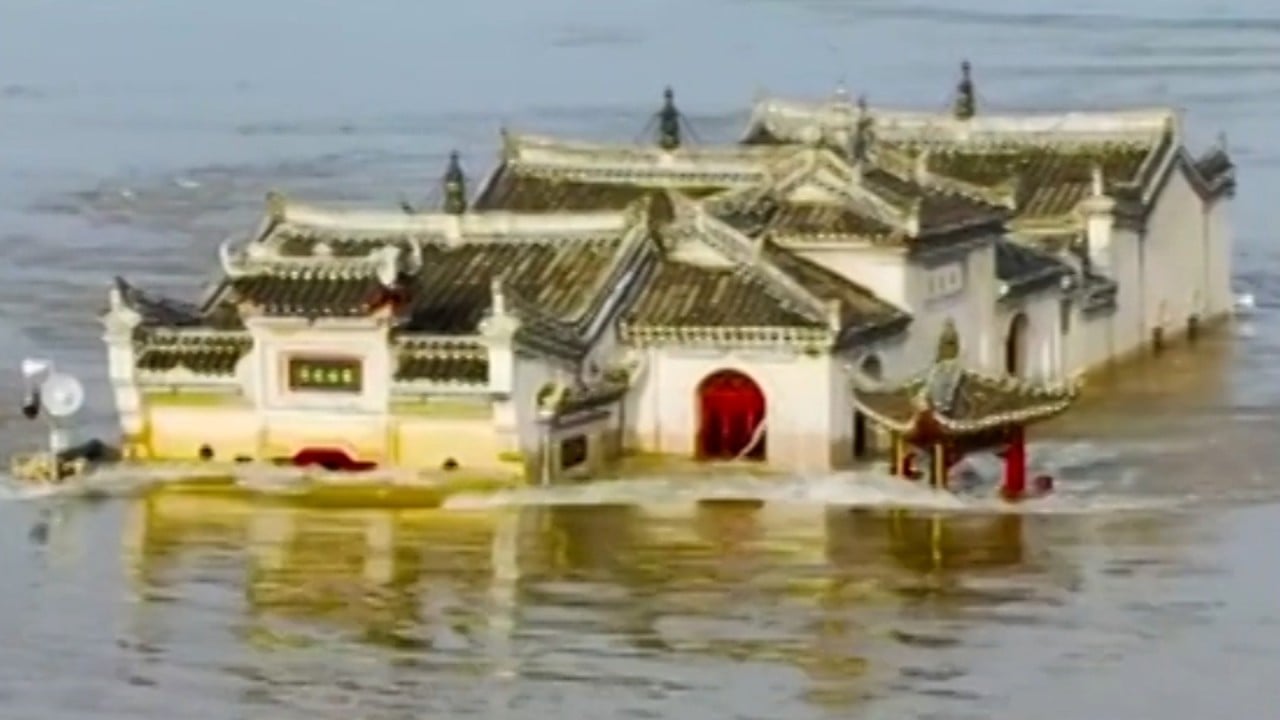
00:55
China’s 700-year-old pavilion withstands numerous floods on Yangtze River
Aside from the rainfall, human behaviour has also contributed to the severity of the floods in China.
Fan Xiao, a geologist with the Sichuan Geology and Mineral Bureau, said decades of land reclamation and dam-building on nearby rivers had reduced the area and volume of Poyang Lake, the country’s largest freshwater lake which is located in Jiangxi.
Some 1,300 sq km (502 sq miles) of land was reclaimed there from 1954 to 1998, which caused the surface area of the lake to shrink from 5,160 sq km (1,992 sq miles) to 3,860 sq km (1,490 sq miles), according to a study by University of Alabama geographer David Shankman.
Environmental volunteer Zhang Wenbin said he had investigated illegal land reclamation activities at Tuolin, another lake in the province. He said some of the projects around the lake were still under way last year, even though they had been ordered to stop by environmental inspectors from Beijing.
“There are many similar cases,” Zhang said, adding that Tuolin Lake had also shrunk in size, reducing its storage capacity for floodwaters.

How does it compare to other years?
China’s worst known floods were in 1931, when more than 2 million people were killed. The flooding inundated an area the size of England and half of Scotland combined, affecting about 25 million people – or a tenth of the population at the time, Chris Courtney, an assistant professor at Durham University, wrote in The Nature of Disaster in China.
Since the People’s Republic of China was founded in 1949, there have been two catastrophic floods. The first was in the summer of 1954 along the Yangtze River, resulting in over 30,000 deaths and affecting 18 million people.
The second was in 1998, again along the Yangtze but also in the south and north of the country. It was the worst flooding in recent years, with more than 3,000 people killed, 15 million left homeless, and US$24 billion in economic losses.
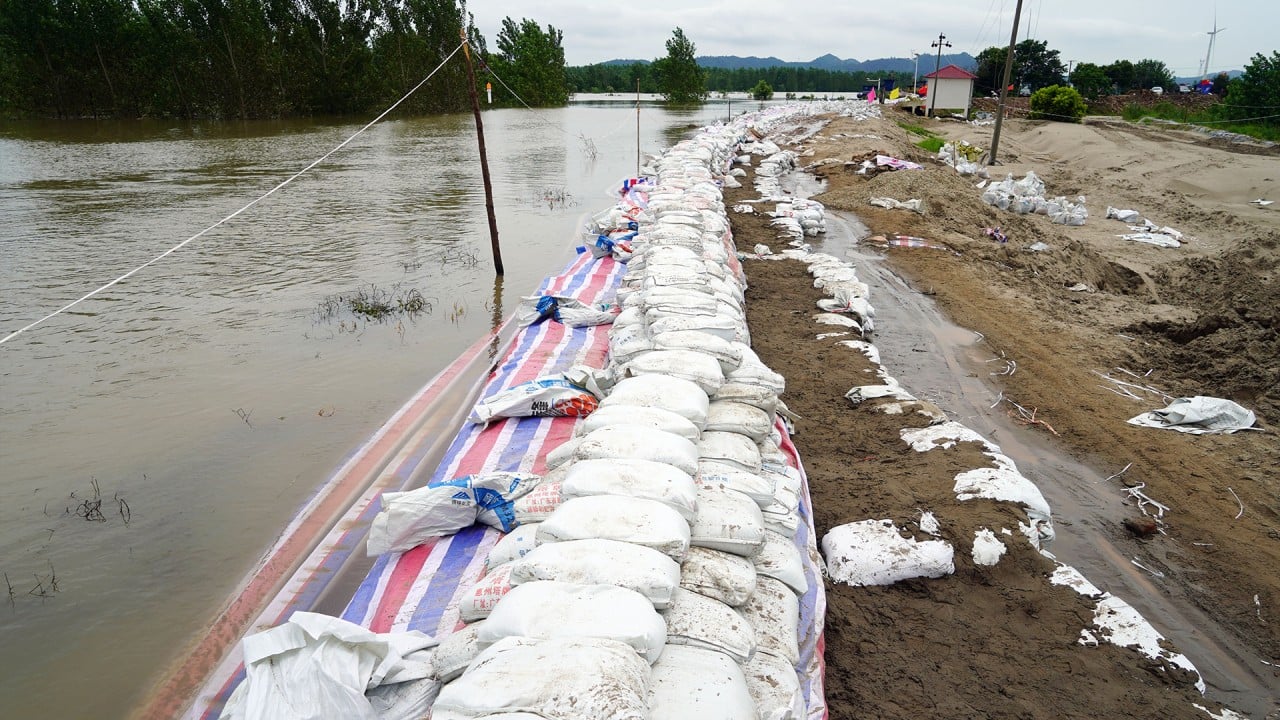
03:14
Chinese island on Yangtze River devastated by 1998 floods faces a repeat of history
But Song Lianchun, head of the National Climate Centre, told reporters on Wednesday that this year’s downpours had not affected such a broad area of the Yangtze River basin as in 1998.
“The floods in 1998 had an impact on the whole Yangtze region, but this year torrential rains have mainly affected the middle and lower reaches of the river, so the affected area is smaller,” Song said.
What about flood defences?
“China’s investment in water resource [infrastructure] in the five years after 1998 was more than the total from 1949 to 1999,” according to Cheng Xiaotao, who sits on an expert panel of the National Disaster Reduction Committee.
Cheng said reservoirs built on China’s major rivers after 1998, including the huge Three Gorges Dam, had a key role in relieving flood pressure in the lower reaches of the Yangtze.

Fan, the geologist from Sichuan, said the dam could partially intercept flooding upstream, but it had a limited effect on controlling floodwaters in the middle and lower reaches of the Yangtze.
According to Peter Gleick, a hydroclimatologist and member of the US National Academy of Sciences, one of the lessons from the Three Gorges was that no dam – no matter how large it was – could prevent the worst floods from occurring.
But Gleick added that it was not known whether China’s floods would have been better or worse without the dam.
“What is known is that the growing risks of human-caused climate change is worsening the risks of extreme rainfall events and floods, which makes it even more likely that dams like the Three Gorges will be unable to prevent the worst flooding from occurring in the future,” he said.

03:18
China’s massive floods move east, battering communities along Yangtze River
Liu Junyan, a climate and energy campaigner with Greenpeace East Asia, said the growing intensity and frequency of extreme weather events meant climate risks should be a consideration for China’s urban planners.
“Planning and construction should be able to deal with [climate] risks in the future,” she said.
Additional reporting by Phoebe Zhang


